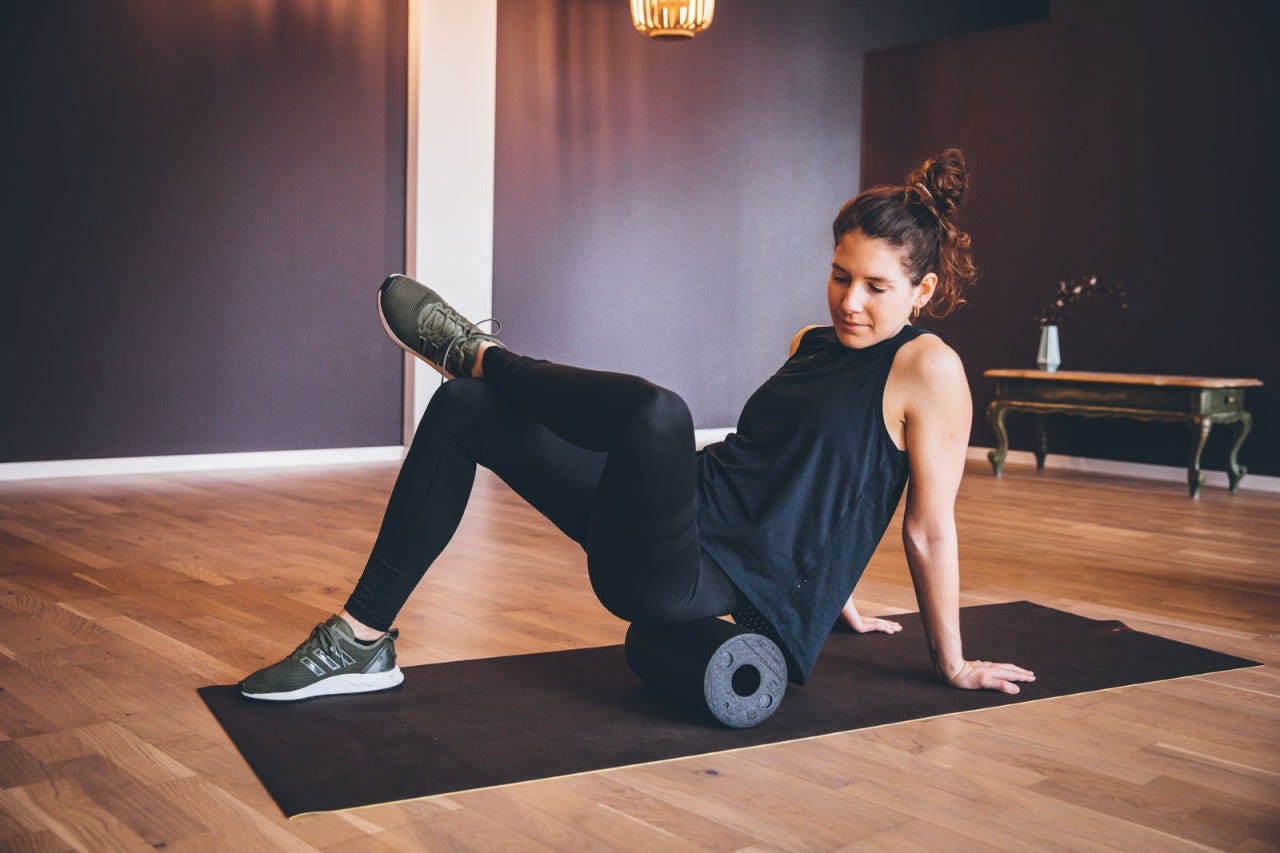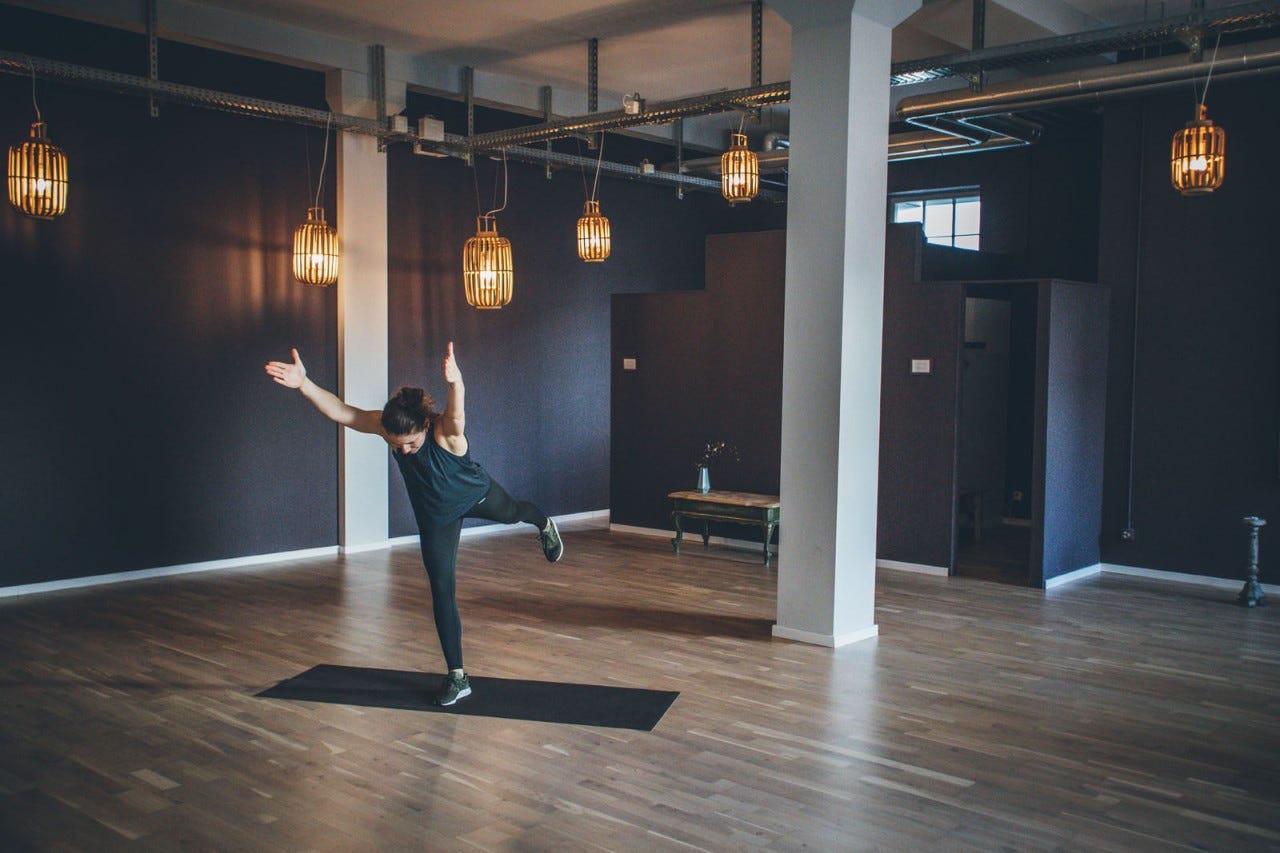Fascia training: supple and pain-free
Connective tissue is an important sensory organ that can be the root cause of many different aches and pains. Exercises with a foam roller loosen knots and thus tension.

The human body is like a grapefruit. At least as far as the fascia is concerned. If you cut the fruit in half, you will see white membranes that divide the flesh into individual slices and a softer skin that surrounds and holds the whole fruit together. Just like in the body: a dense network of whitish fibers, the connective tissue, envelops muscles, tendons, organs and other body structures. The fascia permeates the entire organism and connects everything together. Without them, the skeleton would collapse.
Training video: Exercises for the fascia roll
What is the function of fascia?
For a long time, experts assumed that connective tissue was merely “dead” filling and support material. It was only recently that fasciae became the focus of scientific attention. And with it the realization that they have numerous receptors. This means that they perceive stimuli and transmit them. Fasciae are therefore an important sensory organ that is just as important for body perception as for the sensation of pain. The function and composition of the connective tissue changes depending on where it is located on the body. The fibers can have the tensile strength of steel, but can also be soft and loose and stretch to twice their length. Fascia cushions and protects organs, stabilizes the body, transmits force and plays a key role in movement sequences. They are also essential for cell metabolism.
Knots cause pain
“If you don't move, you get stuck.” With this sentence, fascia researcher Robert Schleip gets to the heart of the issue of pain. Studies have shown that the collagen fibers in the fascia have a kind of lattice structure. The more orderly this structure is, the more supple and functional the connective tissue is.
Age, injuries and physical inactivity cause the structure to become tangled and chaotic. Such tangles reduce the elasticity of the connective tissue, restrict the ability to move and cause pain. Particularly exciting: fasciae react to stress. Recent research findings suggest that there is a direct link between pain in the musculoskeletal system and the state of mind. There is also growing evidence that the large back fascia could be a major cause of widespread back pain.
A roll for the fasciae
To ease or prevent knots and tension, there is a simple and efficient remedy: fasciae love exercise and stretching. They want to be challenged and tested. Pressure and tension is just as important. In addition to getting plenty of varied exercise in your daily routine, a foam roller is therefore an effective aid.
By rolling on a hard foam roller or ball, the connective tissue is squeezed out like a sponge before being replenished and renewed with fresh tissue fluid. The fibres behave like matted hair: At first it is almost impossible to comb through it, but after several passes the hairs start to fall back in one direction. In the same way, the fibres are restructured and ordered by rolling – and thus become more elastic and supple.
Anyone who is healthy can use a foam roller to massage their connective tissue with no problems. To do so, roll slowly with well-dosed pressure back and forth or pause and hold on individual spots for a moment. Don’t push past mild discomfort into real pain. You should be able to breathe comfortably at all times. The rule “less is more” also applies generally to the duration and frequency of fascia training. Using a foam roller twice a week for around ten minutes is enough to feel the benefits.
Older or chronically ill people, e.g. those suffering from rheumatism, or people who have problems with veins or lymph nodes, thrombosis, varicose veins, acute injuries, or who are recovering from surgery should only use a foam roller on consultation with their doctor.
Which fascia roll should it be?
Fascia rollers and balls are available in all sizes, shapes and degrees of hardness. If you are new to fascia training, you will probably be more comfortable with the softer version.
Rollers with nubs or grooves increase metabolic stimulation, while smaller rollers are suitable for smaller parts of the body such as the forearms. For the back, there are rollers with a groove in the middle and double balls, as the recess relieves pressure on the vertebrae.
Balls and ball shapes are suitable for the targeted treatment of individual pressure points and the chest muscles, but tennis balls or rubber balls also fulfill this purpose. Even though there is now a wide range of different fascia rollers and devices available, a roller and a ball are enough to get you started. True to the motto: little effort, great effect.


